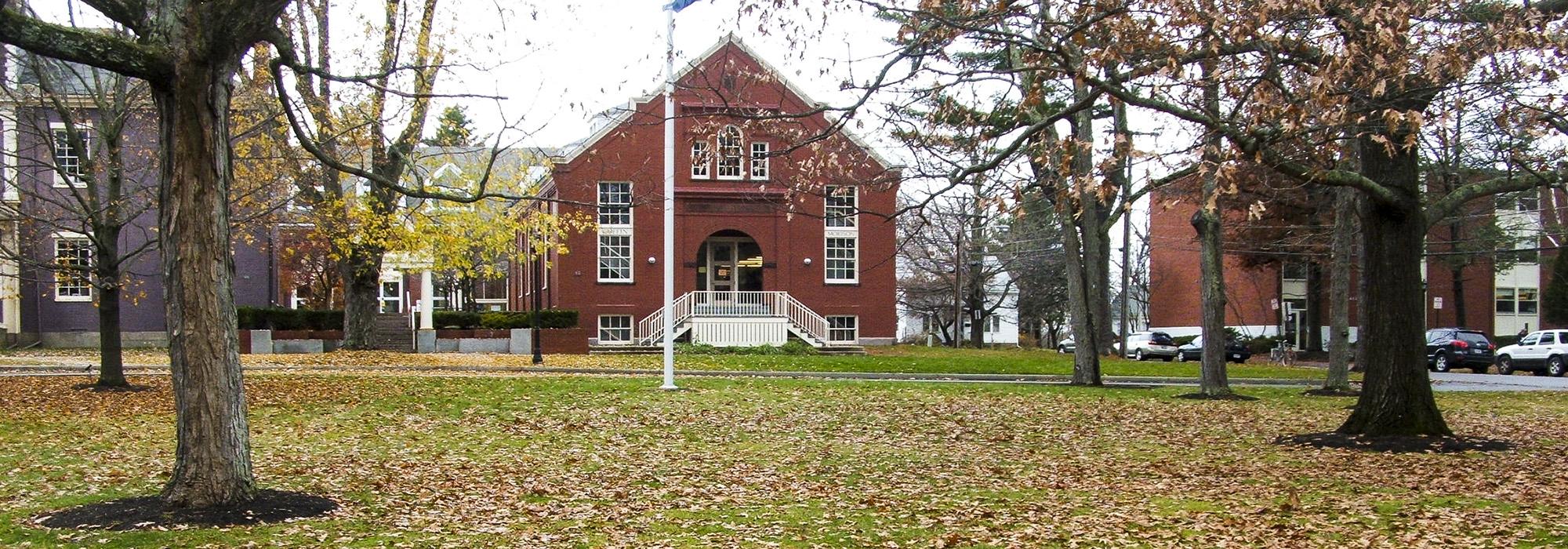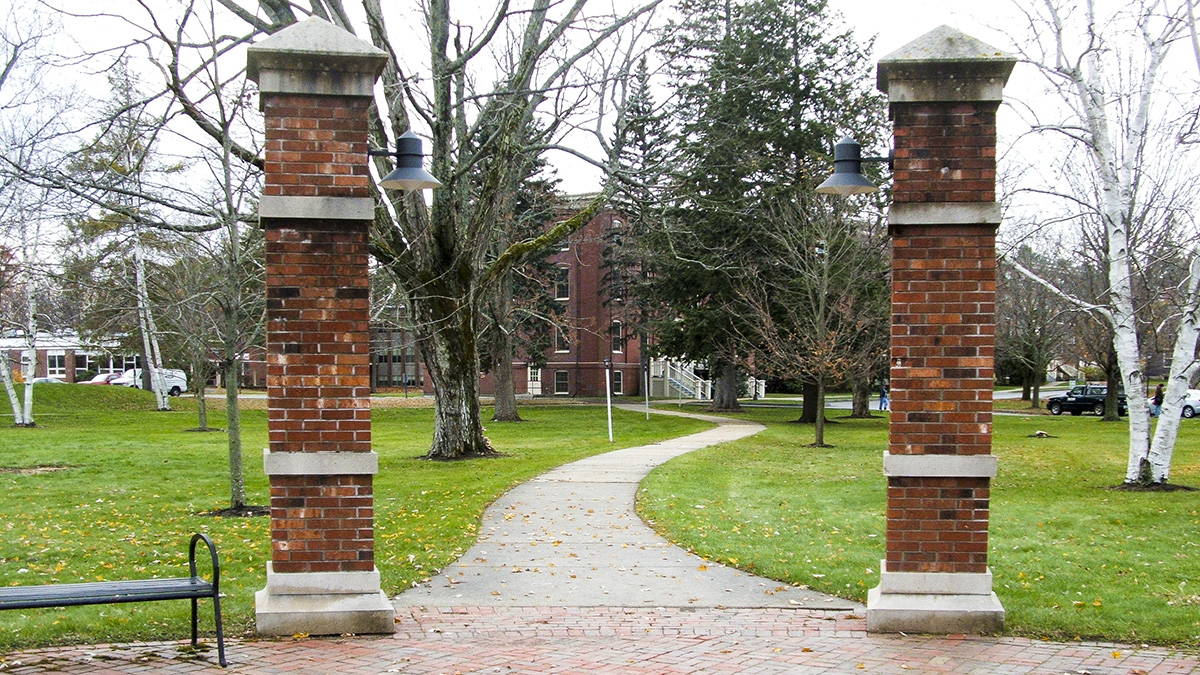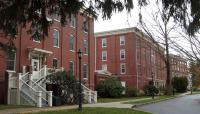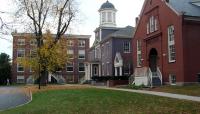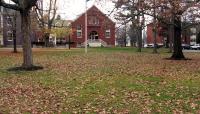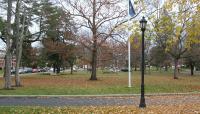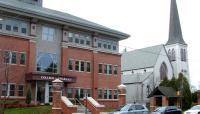John Murray established the first American Universalist church in Massachusetts in the 1770s. Believing that education increased the growth of their sect and strengthened their influence on the world, the Universalists established 30 schools of higher education in the 19th century. The first two were in Massachusetts and New York; Westbrook Seminary was the third, chartered in 1831, and was one of the earliest co-educational schools in the country. Zachariah Stevens donated eight treeless acres in the village of Steven’s Plains for the original campus, whose first students arrived in 1834. Although the campus evolved over time without a formal plan, its 19th-century buildings were arranged around a green quadrangle bordered by a carriage drive. Trees were added along geometric paths beginning in the 1850s. An ornamental wooden fence enclosed two sides of the campus; stone bollards marked pedestrian entrances. Today the quadrangle remains the core of the historic campus, but with some changes to the pedestrian path layout and with the addition of numerous shade trees. The carriage drive evolved into a paved drive that passes building entrances. The fence and bollards no longer exist, but brick and granite pillars, some from the 1950s, mark pedestrian entrances. The roughly 40-acre campus includes twenty buildings, six of which comprise the Westbrook College Historic District, added to the National Register of Historic Places in 1977.
